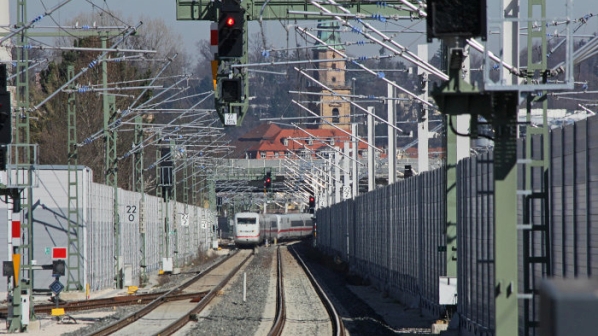Since DB launched its noise reduction programme in 1999, €1.9bn has been invested in noise abatement measures along more than 1800km of track, with tens of thousands of apartments receiving noise remedial work.
Over the next few years, DB and the federal government plan to invest hundreds of millions of euros in projects in the Middle Rhine Valley, Inntal valley and along the Elbe River between Dresden and the border with the Czech Republic.
The project aims to reduce rail traffic noise by 10 decibels compared with 2000 levels, which is perceived as halving the noise level. This is achieved through a two-pillar strategy of installing noise-reduction walls alongside lines while simultaneously using noise reduction technology on trains.
DB is implementing 108 noise protection projects, 65 of which are due to be completed in 2020 along 156km of track. Another 131 projects are currently being planned, with a further 166 possible projects identified.
DB is also installing whisper brakes to reduce noise from freight wagons, with more than 90% of the fleet equipped at the end of 2019. By the end of 2020, the brakes will have been installed across DB Cargo’s entire active fleet in Germany.
Future investment
In the Middle Rhine Valley, the federal government, DB and the states of Hesse and Rhineland-Palatinate are planning to invest €130m in 35 individual projects in the next few years, which will include installing rail dampers and soundproof walls.
The projects will reduce noise for residents in the Upper Middle Rhine Valley between Koblenz and Lahnstein and between Bingen and Rüdesheim as well as in the towns of Weißenthurm, Leutesdorf, Oestrich-Winkel and Eltville.
In the Inntal Valley, noise protection walls and rail dampers will also be installed along the Munich - Rosenheim - Kiefersfelden line, at a cost of around €13m. In the Elbe Valley between Dresden and the Czech border, €56m will be spent on installing soundproof walls.

